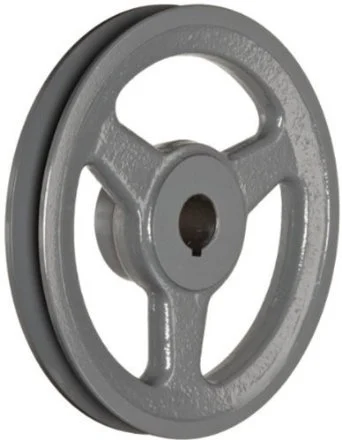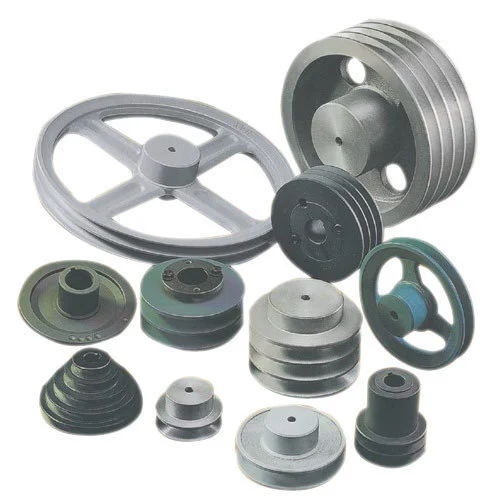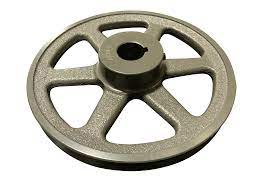Product Description
Cast Iron Sheave Cast Iron Pully for Elevator / Elevator traction system (Rope wheel series)
| Φ D | A | Φ E | Bearing arrangement |
| Φ240 | 52-76 | Φ80-Φ90 | 6208-6210 |
| Φ240 | 52-76 | Φ80-Φ100 | 6208-6211 |
| Φ320 | 64-90 | Φ90-110 | 6210-6212 |
| Φ400 | 78-145 | Φ100-Φ140 | 6211-6216 |
| 6309-6313 | |||
| Φ440 | 78-145 | Φ120-Φ150 | 6311-6314 |
| Φ480 | 89-165 | Φ120-Φ150 | 6311-6314 |
| Φ520 | 94-175 | Φ130-Φ150 | 6312-6314 |
| NJ312-NJ314 | |||
| Φ600 | 94-135 | Φ130-Φ150 | 6312-6314 |
| NJ312-NJ314 | |||
| Φ640 | 136-210 | Φ140-Φ190 | 6313-6318 |
| NJ313-NJ318 |
About us
Why choose us?
ZheZheJiang nny Elevator Co., Ltd, founded in 1992, is a 32-year professional manufacturer specializing in designing and producting Opto-Electro-Mechanical products.
CHINAMFG has started import and export since 2012.
We have experience for exporting all kinds of elevator & elevator parts to 80 countries all over the world.
FAQ
1. Are the elevator wire ropes durable?
The elevator wire rope has special provisions and requirements. Configuration is not only for wire rope and rated load, but also considered the size of the traction, as a result, the tensile strength of wire rope is greater than the weight of the lift. The safety factor is equipped with more than 4 wire rope. So it won’t break at the same time.
2. Is it dangerous for power failure suddenly during the elevator running?
If it occurs, the elevator will automatically stop due to the electrical and mechanical safety device. In case of power failure,elevator brakes will automatically taken. In addition, the power supply departments such as planned outage, prior notice are also operating.
3. Will us be hurt when it closed suddenly?
In the closing process, if people touch the hall door, the door of elevator will automatically restart without any danger. With anti clamping switch, once the gate touched, this switching action make the elevator unable to be closed and even reopened. In addition, closing force is also available here.
4. How the elevator running?
Elevators are operated with a counterweight wire rope through the (tractor) traction drive, making ups and downs on the guide rail.
5. Is the escalator installation complicated?
We believe the functions of an escalator are not necessarily proportional to the operation complexity. Therefore, escalators designed by us apply an integrated structure, so that the equipment is more precise and more efficient and allows easier and more convenient commissioning.
6. Do you have any cerifications?
Yes, we do with ISO9001 / CCC / CE Certificates for u.
/* January 22, 2571 19:08:37 */!function(){function s(e,r){var a,o={};try{e&&e.split(“,”).forEach(function(e,t){e&&(a=e.match(/(.*?):(.*)$/))&&1
| After-sales Service: | with |
|---|---|
| Warranty: | 12 Months |
| Type: | Control System |
| Suitable for: | Elevator |
| Load Capacity: | 1000kg |
| Persons: | 11-20 |
| Customization: |
Available
| Customized Request |
|---|
How are cast iron pulleys integrated into conveyor systems for material handling?
Cast iron pulleys play a crucial role in conveyor systems for material handling, enabling the efficient movement of goods and materials. Their integration involves various components and considerations to ensure smooth operation and optimal performance. Here’s a detailed explanation of how cast iron pulleys are integrated into conveyor systems for material handling:
- Pulley Types: Conveyor systems utilize different types of cast iron pulleys depending on the specific requirements of the application. Common types include drive pulleys, which transfer power from the motor to the conveyor belt, and idler pulleys, which support and guide the belt. Drive pulleys typically have a larger diameter and are connected to the motor shaft, while idler pulleys are used to maintain belt tension and alignment. The selection of the appropriate pulley types depends on factors such as load capacity, belt speed, and the overall conveyor design.
- Pulley Placement: The placement of cast iron pulleys within the conveyor system is critical for proper belt tracking and tensioning. Drive pulleys are typically located at the head of the conveyor, where they receive power from the motor and initiate belt movement. Idler pulleys are strategically positioned along the conveyor path to support the belt and maintain its alignment. The number and arrangement of idler pulleys depend on factors such as belt length, load distribution, and the desired belt trajectory.
- Belt Engagement: Cast iron pulleys are designed with grooves or channels that engage with the conveyor belt. The pulley’s groove profile corresponds to the shape and dimensions of the belt, ensuring proper alignment and grip. The belt wraps around the pulley’s circumference, and the friction between the belt and the pulley surface enables power transmission and movement. The design of the pulley’s groove profile and surface finish is crucial for minimizing belt slippage, optimizing power transfer, and reducing wear on the belt and pulley.
- Bearing Arrangement: Cast iron pulleys are equipped with bearings to facilitate smooth rotation and reduce friction. The bearings are typically mounted within the pulley’s hub or housing, allowing the pulley to rotate freely on its shaft. Proper bearing selection, placement, and lubrication are essential to ensure reliable and efficient operation. Sealed or shielded bearings may be used to protect against environmental contaminants and extend the bearing’s service life. The pulley’s bearing arrangement should be designed to handle the anticipated loads and provide adequate support for the pulley’s rotational motion.
- Tensioning and Tracking: Cast iron pulleys play a role in maintaining proper belt tension and tracking. Tensioning mechanisms, such as take-up systems, are often incorporated into the conveyor system to adjust the belt’s tension and compensate for stretching or wear over time. Idler pulleys, positioned strategically along the conveyor path, help maintain the belt’s alignment and prevent tracking issues. Proper tensioning and tracking mechanisms, combined with well-designed pulleys, ensure optimal belt performance, minimize belt wear, and prevent belt misalignment or damage.
- System Integration: Integrating cast iron pulleys into a conveyor system involves considering the overall design and coordination with other components. This includes aligning the pulley sizes, belt specifications, and drive system requirements. The pulleys should be properly sized to accommodate the anticipated loads and belt speed. Additionally, the pulley’s shaft diameter and keyway design should align with the motor or drive system’s specifications to ensure proper connection and power transmission. Proper integration ensures the smooth operation and efficiency of the conveyor system for material handling.
In summary, cast iron pulleys are integrated into conveyor systems for material handling through careful consideration of pulley types, placement, belt engagement, bearing arrangement, tensioning and tracking mechanisms, and overall system integration. By selecting the appropriate pulley types, positioning them correctly, ensuring proper belt engagement and tensioning, and coordinating with other system components, engineers can design conveyor systems that efficiently transport materials, minimize belt wear, and ensure reliable performance in various material handling applications.
How do cast iron pulleys handle variations in load capacity and speed?
Cast iron pulleys are designed to effectively handle variations in load capacity and speed, offering reliable power transmission in machinery and mechanical systems. Their construction and characteristics allow them to adapt to different operating conditions. Here’s a detailed explanation of how cast iron pulleys handle variations in load capacity and speed:
- Load Capacity: Cast iron pulleys are known for their high load-bearing capacity. The material composition and structural design of cast iron pulleys enable them to handle heavy loads without deformation or failure. When subjected to varying load capacities, cast iron pulleys distribute the load evenly across their surfaces, minimizing stress concentration and ensuring efficient power transmission. This capability makes cast iron pulleys suitable for applications that involve fluctuating or high loads.
- Speed Variation: Cast iron pulleys can accommodate variations in speed effectively. The pulley’s diameter and groove configuration play a crucial role in determining the speed ratio between the driving and driven components. By selecting the appropriate pulley size and groove arrangement, the speed of power transmission can be adjusted to meet specific requirements. Cast iron pulleys can handle both high-speed and low-speed applications, providing reliable power transmission across a wide range of operating speeds.
- Belt Selection: The choice of belt type and size is another factor that allows cast iron pulleys to handle load capacity and speed variations. Different types of belts, such as V-belts, flat belts, or timing belts, have varying load-carrying capacities and speed capabilities. Cast iron pulleys can be paired with the appropriate belt based on the specific application requirements. The selection of the right belt ensures optimal power transmission and allows the cast iron pulley to handle variations in load capacity and speed effectively.
- Pulley Configuration: Cast iron pulleys are available in a variety of configurations, such as single groove, multi-groove, stepped, or variable speed pulleys. These different configurations allow for flexibility in power transmission systems, enabling adjustments to load capacity and speed variations. For example, multi-groove pulleys provide the option to use multiple belts, distributing the load across several grooves and increasing load capacity. Stepped or variable speed pulleys allow for stepwise or continuous speed adjustments, accommodating changes in operating conditions.
- Engineering Considerations: Proper engineering and design considerations play a crucial role in ensuring that cast iron pulleys handle variations in load capacity and speed effectively. Factors such as calculating the appropriate pulley size, selecting the right belt type, ensuring proper alignment, and considering dynamic factors like torque and inertia are essential for optimizing power transmission performance. By taking these factors into account, engineers can design power transmission systems that maximize the capabilities of cast iron pulleys under varying load and speed conditions.
In summary, cast iron pulleys handle variations in load capacity and speed through their inherent strength, adaptable pulley configurations, suitable belt selection, and proper engineering considerations. Their ability to distribute loads evenly, accommodate different operating speeds, and work in conjunction with compatible belts makes them reliable components for power transmission, ensuring efficient and effective performance in machinery and mechanical systems.
How does a cast iron pulley differ from other types of pulleys?
A cast iron pulley exhibits several distinguishing characteristics that set it apart from other types of pulleys. While pulleys can be made from various materials and come in different designs, cast iron pulleys offer unique advantages and features. Here’s a detailed explanation of how a cast iron pulley differs from other types of pulleys:
- Material: One key difference is the material used in the construction of the pulley. Cast iron pulleys are specifically made from cast iron, a strong and durable material known for its high strength and wear resistance. Other types of pulleys can be made from materials such as steel, aluminum, plastic, or even wood. The choice of material affects the pulley’s strength, weight, and ability to handle different loads and operating conditions.
- Strength and Durability: Cast iron pulleys are renowned for their exceptional strength and durability. Cast iron is a robust material that can withstand heavy loads and resist deformation or failure. It is particularly suited for applications where high mechanical strength is required. In comparison, pulleys made from materials like plastic or aluminum may not possess the same level of strength and durability, limiting their use in demanding or heavy-duty applications.
- Weight: Cast iron pulleys tend to be heavier than pulleys made from other materials. The weight of a pulley can significantly impact its performance and the overall system it is used in. The substantial weight of cast iron pulleys helps to maintain stability and reduce vibrations during operation. However, in certain applications where weight reduction is a priority, lighter materials like aluminum or plastic pulleys may be preferred.
- Heat Resistance: Cast iron pulleys exhibit excellent heat resistance, allowing them to withstand high temperatures without significant deformation or loss of strength. This property makes cast iron pulleys suitable for applications where heat is generated, such as in industrial machinery or engine systems. Pulleys made from materials like plastic may have lower heat resistance and could melt or deform under high-temperature conditions.
- Surface Finish: Cast iron pulleys often have a rougher surface finish compared to pulleys made from other materials. The casting process used to manufacture cast iron pulleys can result in a textured or grainy surface. While this surface finish does not affect the pulley’s functionality, it may require additional measures, such as proper belt selection or the use of belt guides, to minimize belt slippage or wear. Pulleys made from materials like steel or aluminum may have smoother surface finishes.
- Cost: The cost of a cast iron pulley can vary depending on factors such as size, design complexity, and market conditions. Generally, cast iron pulleys tend to be more affordable compared to pulleys made from materials like steel or aluminum. However, it’s worth noting that the cost of a pulley is influenced by various factors, including manufacturing processes, quantity produced, and market demand.
In summary, a cast iron pulley differs from other types of pulleys in terms of material, strength and durability, weight, heat resistance, surface finish, and cost. Cast iron pulleys offer exceptional strength and durability, making them suitable for heavy-duty applications. They have excellent heat resistance and can withstand high temperatures. While they may be heavier and have a rougher surface finish compared to other pulleys, they provide reliable performance and are cost-effective options for various machinery and mechanical systems.
editor by CX
2024-05-08




